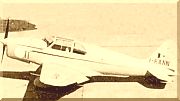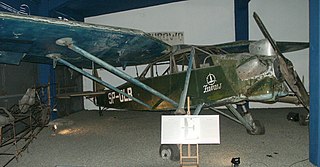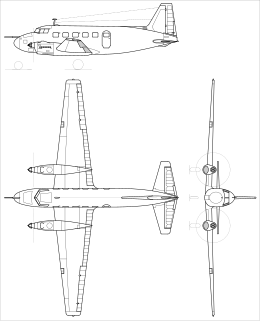| Chincol | |
|---|---|
| Role | Trainer aircraft |
| Manufacturer | Fanaero-Chile |
| First flight | 14 December 1955 |
The Fanaero-Chile Chincol (named for a South American sparrow) was a prototype trainer aircraft developed in Chile in 1955 for air force use. It was a conventional, low-wing cantilever monoplane of mixed construction, with fabric covered wooden wings and tail surfaces (making extensive use of Mañío, an indigenous wood). It was fitted with a fixed tailwheel undercarriage and was powered by a single 215 horsepower (160 kW) Continental O-470 air-cooled horizontally-opposed piston engine. The pilot and instructor sat in tandem, and were enclosed under a long canopy. The prototype Chincol made its maiden flight on 14 December 1955. The Chilean Air Force responded positively to the design, and placed an order for 50 machines. [1] However, technical problems significantly delayed manufacture, and the order was cancelled before the aircraft were produced.

A trainer is a class of aircraft designed specifically to facilitate flight training of pilots and aircrews. The use of a dedicated trainer aircraft with additional safety features—such as tandem flight controls, forgiving flight characteristics and a simplified cockpit arrangement—allows pilots-in-training to safely advance their real-time piloting, navigation and warfighting skills without the danger of overextending their abilities alone in a fully featured aircraft.

Chile, officially the Republic of Chile, is a South American country occupying a long, narrow strip of land between the Andes to the east and the Pacific Ocean to the west. It borders Peru to the north, Bolivia to the northeast, Argentina to the east, and the Drake Passage in the far south. Chilean territory includes the Pacific islands of Juan Fernández, Salas y Gómez, Desventuradas, and Easter Island in Oceania. Chile also claims about 1,250,000 square kilometres (480,000 sq mi) of Antarctica, although all claims are suspended under the Antarctic Treaty.

A cantilever is a rigid structural element, such as a beam or a plate, anchored at one end to a support from which it protrudes; this connection could also be perpendicular to a flat, vertical surface such as a wall. Cantilevers can also be constructed with trusses or slabs. When subjected to a structural load, the cantilever carries the load to the support where it is forced against by a moment and shear stress.









